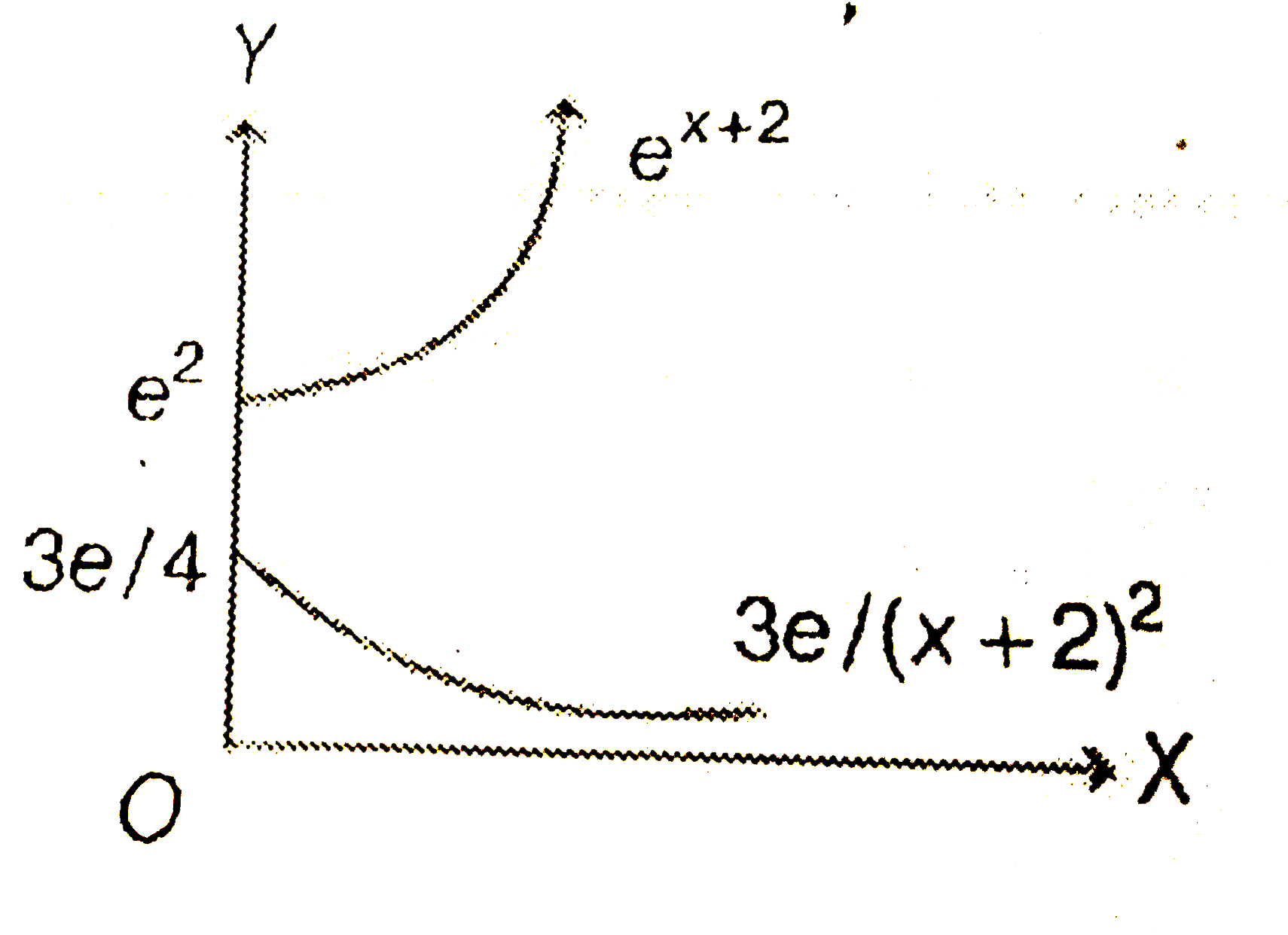A solution curve of the differential equation (x2+xy+4x+2y+4)(dydx)−y2=0 passes through the point (1,3) Then the solution curve isSolution in Tamil
(a) intersects y=x+2 exactyly at one point
(b) intersects y =x+2 exactly at two points
(c) intersects y =(x+2)^(2)
(d) does not intersect y = (x+3)^(2)
The correct Answer is:(a,d)
Given, (x2+xy+4x+2y+4)dydx−y2=0
⇒[(x2+4x+4)+y(x+2)]dydx−y2=0
⇒[(x+2)2+y(x+2)]dydx−y2=0
Putx+2=Xandy=Y,then
(X2+XY)dYdx−Y2=0
⇒X2dY+XYdY−Y2dX=0
⇒X2dY+Y(XdY−YdX)=0
⇒dYY+XdY−YdXX2
⇒d(log|Y|)=d(YX)
On integrating both sides, we get
−log|Y|=YX+C,wherex+2=Xandy=Y
−log|Y|=yx+2+C…(i)
Since, it passes through the point, (1,3).
∴−log3=1+C
⇒C=−1−log3=1(loge+log3)
=−log3e
∴ Eq. (i) becomes
log|y|+yx+2−log(3e)=0
⇒log(|y|3e)+yx+2=0...(ii)
Now, to check option (a),y=x+2 interescts the curve.
⇒log(|x+2|3e)+x+2x+2=0⇒log(|x+2|3e)=−1
⇒|x+2|3e=e−1=1e
∴x=1,−5(rejected),asx>0
∴x=1 only one solution.
Thus, (a) is the correct answer.
to check option (c), we have
y=(x+2)2andlog(|y|3e)+yx+2=0
⇒log[|x+2|23e]+(x+2)2x+2=0⇒log[|x+2|23e]=−(x+2)
⇒(x+2)23e=e(x+2)or(x+2)2⋅ex+2=3e⇒ex+2=−3e(x+2)2
Clearly, they have no solution. ltbegt To check option (d), y−(x∣3)2
i.e. log[|x+3|23e]+(x+3)2(x+2)=0
To check the number of solutions.
Let g(x)=rlog(x+3)+(x=3)2(x+2)−log(3e)
∴g'(x)=2x+3=((x+2)⋅2(x+3)−(x+3)2(x+2)2)−0
=2x+3+(x+3)(x+1)(x+2)2
Clearly, whenx>0, then, g'(x)>0
∴ g(x) is increasing, when x>0.
Thus, when x>0,theng(x)>g(0)
g(x)>log(3e)+94>0

Similar Questions
For the differential equation xydydx=(x+2)(y+2), find the solution curve passing through the point (1, -1).
View SolutionFor the differential equation xydydx=(x+2)(y+2), find the solution curve passing through the point (1, -1).
View SolutionFor the differential equation xydydx=(x+2)(y+2), find the solution curve passing through the point (1, -1).
View SolutionFor the differential equation xydydx=(x+2)(y+2), find the solution curve passing through the point (1, -1).
View SolutionFor the differential equation xydydx=(x+2)(y+2), find the solution curve passing through the point (1, -1).
View Solutionअवकल समीकरण xydydx=(x+2)(y+2) के लिए बिंदु (1, -1) से गुजरने वाली वक्र ज्ञात कीजिए।
View Solutionमाना की अवकल समीकरण (differential equation ) (x2+xy+4x+2y+4)dydx−y2=0,x>0 का एक हल वक्र (solution curve ) बिंदु (1 ,3 ) से गुजरता है। तब वह हल वक्र
View SolutionA solution curve of the differential equation (x2+xy+4x+2y+4)(dydx)−y2=0 passes through the point (1,3) Then the solution curve is
View Solution
